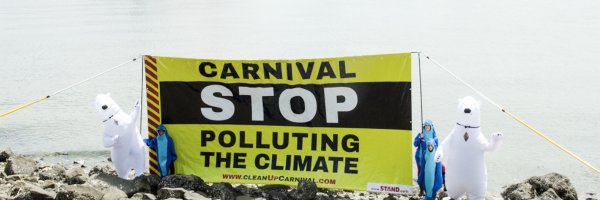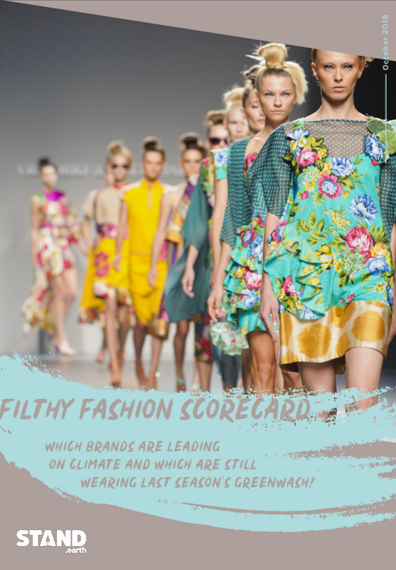 Stand.Earth was created to challenge corporations and governments to treat people and the environment with respect. It was founded over 20 years ago by a group of dedicated people who were working day in and day out to solve a big problem: What do you do when the health and foundation of communities and their environment are being undermined? Over the years, their work and approach has evolved from a dedicated focus on forest protection to taking on some of the root causes of climate change and environmental injustice. Here we hear from Tzeporah Berman, the International Program Director at Stand.Earth.
Stand.Earth was created to challenge corporations and governments to treat people and the environment with respect. It was founded over 20 years ago by a group of dedicated people who were working day in and day out to solve a big problem: What do you do when the health and foundation of communities and their environment are being undermined? Over the years, their work and approach has evolved from a dedicated focus on forest protection to taking on some of the root causes of climate change and environmental injustice. Here we hear from Tzeporah Berman, the International Program Director at Stand.Earth.
Why did you join the Rapid Transition Alliance?
It is clear to us at Stand Earth that the solutions to the climate crisis are global and that our work needs to be connected to others who share our goals – our need to align policies and laws with a 1.5 degree world. More specifically, I was excited to hear that Peter Newell from the Rapid Transition Alliance had been developing the idea of a fossil fuel non proliferation treaty and was keen to start talking about this with him.
What for you is the biggest challenge of rapid transition?
Aligning our plans locally and globally for the infrastructure that will be needed to fuel our lives and the economy in the future with our aspirations for climate safety, is a big challenge. Although my country of Canada is relatively wealthy with a stable democracy, and we’ve committed to Paris goals, we are still expanding oil and gas production faster than almost every other country in the world. We can no longer afford to just talk about reducing fossil fuel emissions. The greatest challenge is that while we try to transition away from fossil fuels, at the same time we are increasing our reliance on them. Trillions of dollars are focused on oil, gas and coal exactly when we should be leaving them behind forever. Until we have an honest conversation about reducing supply and demand, we won’t be able to plan for a just transition.
What is your organisation doing to encourage rapid transition?
 Stand Earth runs campaigns focused on ending the expansion of oil and gas production and focusing financial and corporate power on ensuring a safe climate. We think that corporations and the industrial sectors have a huge role to play and we have been dismayed by little more than incremental change at government or state level. Our programmes try to address this.
Stand Earth runs campaigns focused on ending the expansion of oil and gas production and focusing financial and corporate power on ensuring a safe climate. We think that corporations and the industrial sectors have a huge role to play and we have been dismayed by little more than incremental change at government or state level. Our programmes try to address this.
We choose sectors of the economy where we are not seeing climate progress and then launch campaigns against individual companies to reduce their use of fuels.

For example, the north American cruise line firm Carnival uses heavy fuel oils that have huge impacts on our air, water and climate. We are able to focus on them alone and raise questions as to whether they should use heavy oil at all. Companies have huge sway over laws. International shipping previously had no agreements or targets to mitigate for climate change. Shipping is not included in national climate plans and is outside most countries’ calculations. We want to force the conversation to demand that the International Maritime Organisation (IMO) create a more ambitious climate plan and ban heavy fuel oil – not just in the Arctic – but everywhere.

Similarly, in the fashion industry, before our campaign, no company had a plan involving scope 3 carbon use – i.e. the carbon cost of fashion production. Our campaign “Too dirty to wear” focused on Levi’s jeans. It takes 20lbs of coal to make just one pair, so we demanded Levis take their scope 3 carbon into account and they are the first company to do this in their climate policy. The apparel industry has a massive impact on the demand for new coal in the world – and particularly in South East Asia. Stand Earth has recently published the ‘Filthy Fashion’ report on this and fashion companies are now jostling to make sure they have a good report card.
The other arm of Stand Earth looks at the role of local and national governments. We are working with cities on a campaign to help them pass legal land ordinances to ban the use of fossil fuel infrastructure. Under the IPPC’s goals, we cannot afford to build any more. We also support others to take similar action. This is where the development of a new proposal for a global fossil fuel non-proliferation treaty comes in. We need a global conversation to include how much is being produced and by whom in order to create a pathway to the future. Stand Earth will be managing the steering group to coordinate the workplan for this.
What is your favourite example of rapid transition?
My favourite example is the fashion industry. Just a year ago, we sat in meetings with individual companies telling us not only was it not their responsibility to address the full cost of the production cycle – but that it wasn’t possible. We thought that any brand that buys hundreds of millions of kilowatts of power must have the opportunity to know where that power is coming from, which means they should know how much their product is contributing to the continued growth of fossil fuel use. They make excuses of course, saying “we just build our plants and plug in” or “we just contract people” but it is absurd for any corporation to say they are not responsible for the climate impact of their products. Levis have shown that with a little leadership you can have a dramatic change across an entire sector that will affect government policies, like a pebble that ripples out across the water. These customers are so big and they can make huge changes if they want to. Stand Earth has already produced a bunch of information about the impact of this campaign.
What one thing would best help the task of rapid transition?
Every country should start using analysis and projections for a climate safe world below 2 degrees in all their decisions and budgets. Right now, when anyone decides whether to make an investment, they use business as usual demand projections. Current IEA projections put us onto a trajectory for a 4-6 degree world. That assessment is still the basis for major project and budget decisions globally. For example, when deciding whether to build the TransCanada pipeline, they still use these figures. I think it’s reasonable to ask them to base it on a habitable world, not on 4-6 degrees. If we were actually using projections on the basis of 2 degrees maximum, we would have to assess projects very differently. Today’s economics continue to chug along regardless of the danger we face.
We need to marry our economic analysis with our climate needs. We can’t say we need a safe world while we build stuff that continues to damage it.
